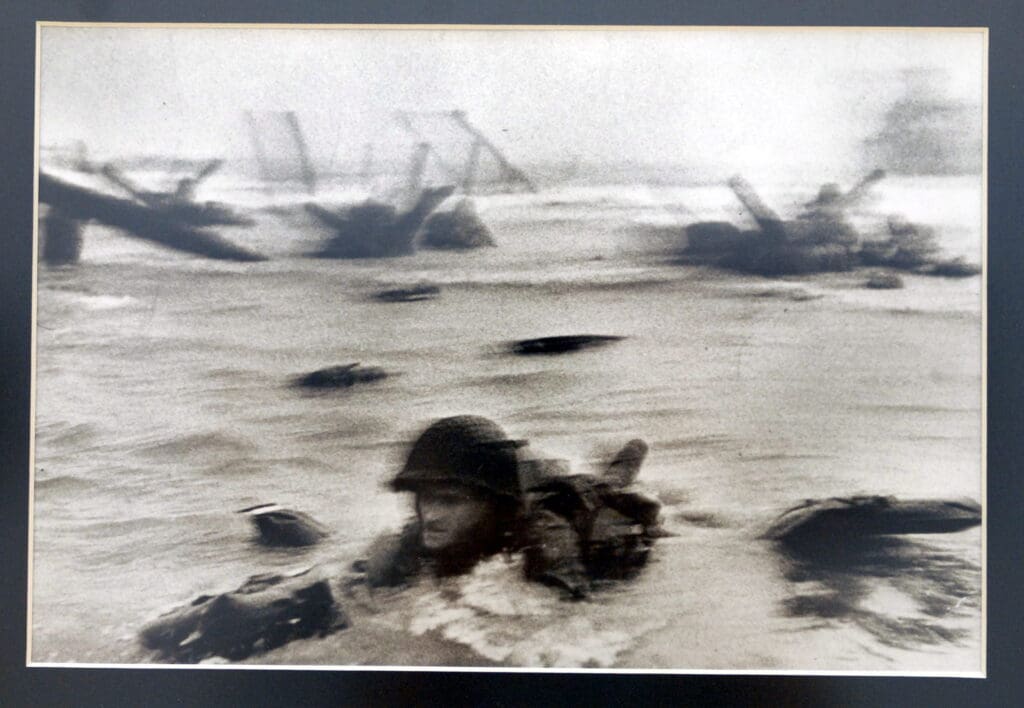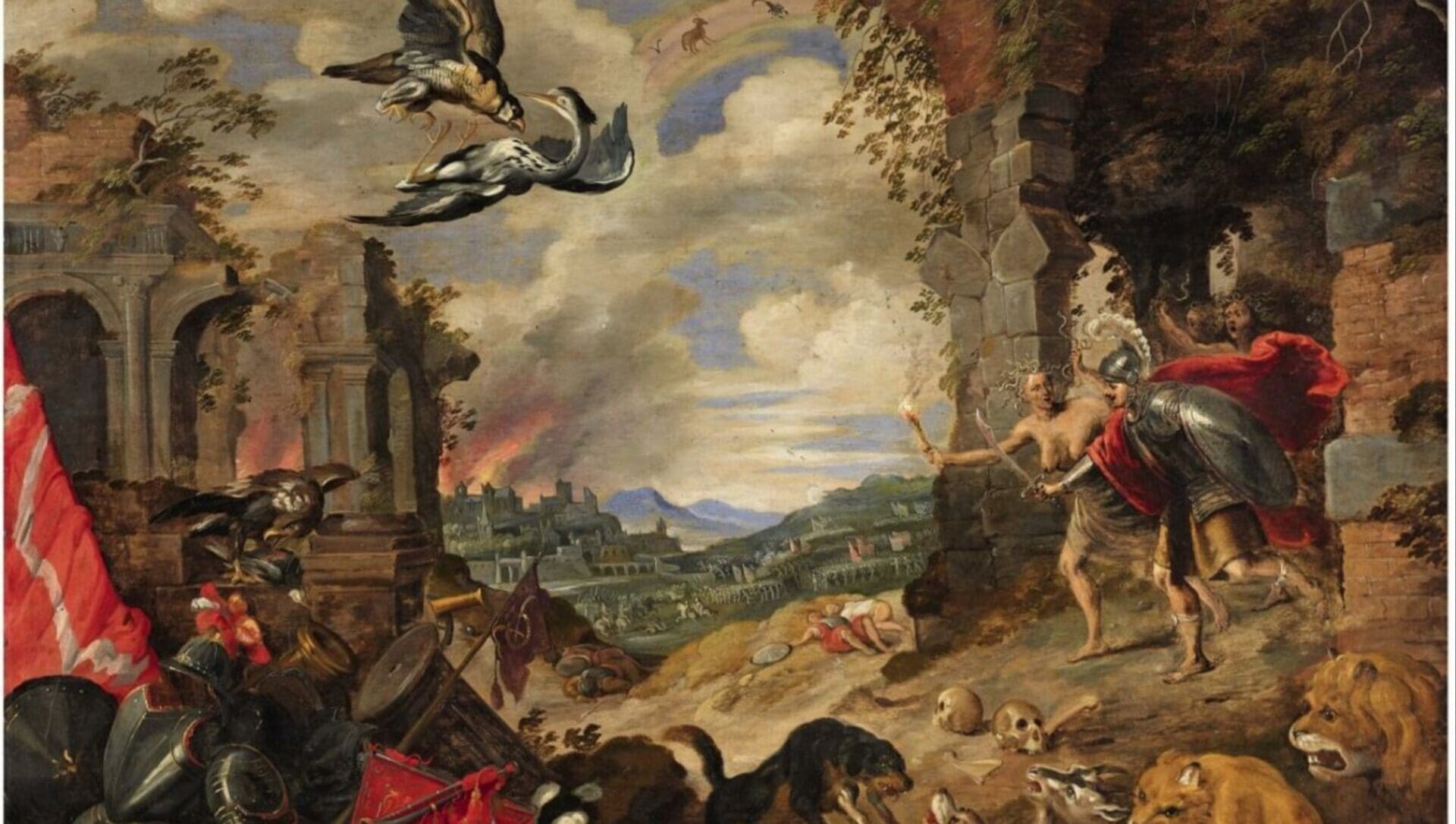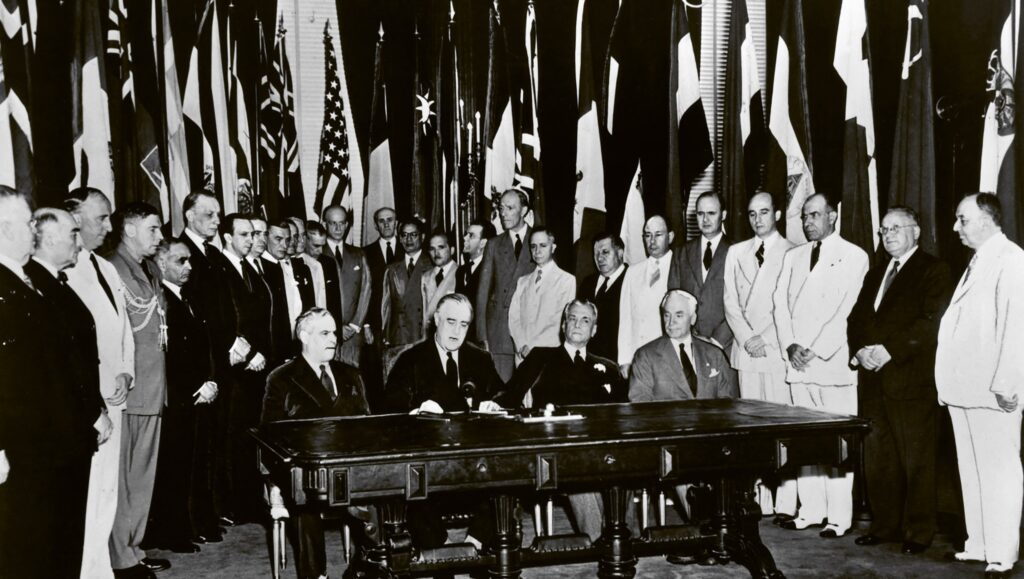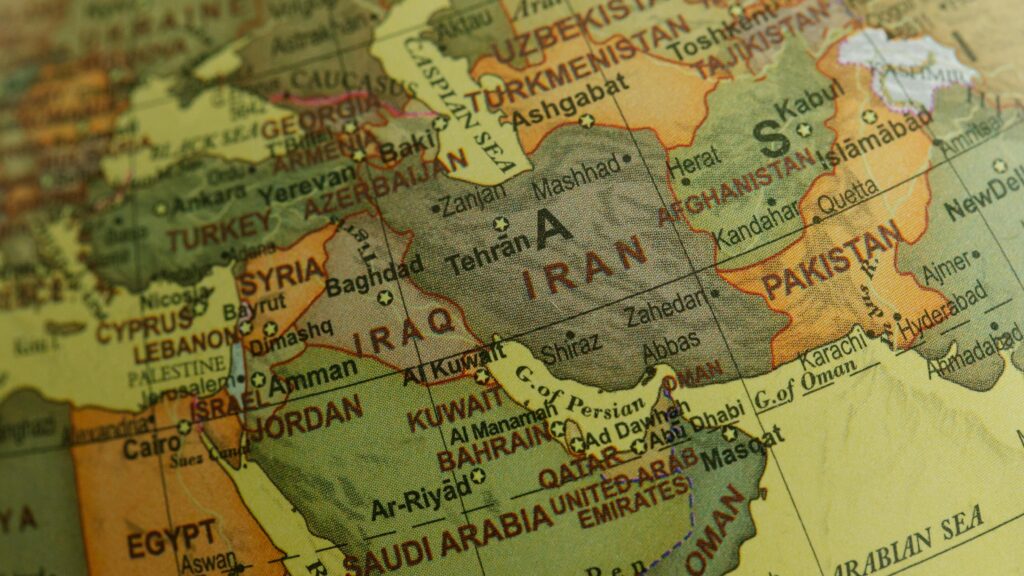This article was published in Vol. 3 No. 4 of our print edition.
Democracies are likely to win wars. A sample from the Correlates of War dataset (COW) finds that democracies win 75 per cent of the wars they fight (1816–1990).1 Political scientists have given democratic victory less attention than democratic peace. Their deductions tend to share the same premises, but produce antagonistic explanations, ranging from economic power to political prudence, in selecting the best capabilities and opportunities. The theories are so multiple that democracies seem, academically, to have no disadvantages at all. Michael Desch warns of ‘democratic triumphalism’—a motivated bias that neglects democratic vulnerabilities.2
A less triumphalist approach is warranted. In the first section, I show that democratic economic power incentivizes long, remote wars—contrary to the triumphalist view that democracies seek decisive, proximate victories.
Next, I point out that democratic leaders’ exposure to electoral punishment for costly wars encourages low-exposure strategies—contrary to the triumphalist view that democracies seek to close. Of the three types of strategy that triumphalists conceptualize, low-exposure strategies fit ‘punishment’ and ‘attrition’ better than ‘manoeuvre strategy’, which triumphalists deduce as the democratic preference.
Finally, I show that democracies grow up within natural barriers, with anxiety about armies intervening in politics, and with superior economic capacity, and so favour maritime, air, and space warfare—not the ground manoeuvre warfare that triumphalists claim.
Material Power and Long, Remote Wars
Democracies tend to possess larger economies, with more wealth and technological innovation. They tend to convert a lower proportion of economic capacity into military capabilities during peacetime, but a greater proportion during wartime. As such, they tend to fight with material preponderance.3 An aggregate index of military personnel count, total military expenditure, and military expenditure per soldier suggests that wartime democracies are 1.35 times more powerful than wartime autocracies.4
The commonest premise across theories for democratic peace and democratic victory is that democratic leaders fear electoral punishment for failure. The same premise explains monadic democratic peace (democratic leaders cannot convert enough resources to wage unpopular wars), dyadic democratic peace (capacity discourages attackers), and democratic victory (once permitted by the electorate, democratic leaders convert more capacity).5
Even if a democracy is not materially powerful on its own, democracies make wider and longer lasting alliances.6 According to the aggregate index of military personnel count, total military expenditure, and military expenditure per soldier, democratic wartime coalitions are 1.8 times stronger than non-democratic wartime coalitions.7
Dan Reiter and Allan Stam counter the material explanation for democratic victory with non-material factors, such as strategy.8 Nevertheless, they prove statistically that COW’s CINC scores (Composite Index of National Capability scores, economic and military, by state-year), both domestic and allied, correlate significantly with democratic victory. True, their models produce a weaker correlation than preceding models, but their added controls (particularly their judgements of strategy, leadership, and initiative) are hardly valid.9 Later, Reiter and Stam reported statistically that ‘democratic belligerents did not enjoy larger economies or greater industrial production than did non-democratic belligerents’ (for the years 1816 to 1990). However, they tested state-years rather than sides in a war.10
Clearly, democracies are likely to wage war with more material power than autocratic enemies. Here we get to the hitherto unexplored implications for how democracies fight. The materially powerful are in no hurry, knowing that they have more capacity. Autocracies must win quickly, before democracies convert their superior capacity into superior capability. If you are in no hurry, you can afford a long, remote war, with economic sanctions, proxies, and remote strike weapons, such as cruise missiles. Long-duration, remote strategies also reduce exposure of friendly personnel—the focus of the section below.

Casualty Sensitivity and Low-Exposure Strategies
Reiter and Stam have done most to push the theory that democracies choose ‘manoeuvre strategy’ in pursuit of quick, decisive victory, for fear of electoral punishment for costly wars. However, another incentive for manoeuvre is to avoid a decisive confrontation, for fear of high casualties and thence electoral punishment.
Democratic triumphalists ignore this antinomy. Methodologically, they do not recognize remote, long-duration, or low-exposure strategies. Indeed, they recognize only three strategies, of which ‘attrition’ and ‘punishment’ are closer to remote, long-duration, low-exposure strategies than to the ‘manoeuvre strategy’ that they theorize as the democratic preference.
The methodology that Stam invented, and various co-authors took up, has tended to dazzle readers, so its invalidity needs some exposure here. John Mearsheimer was first to reduce all military strategies to three mutually exclusive types: (‘Blitzkrieg’, ‘attrition’, and ‘limited aims’). Edward Luttwak re-termed the types. Stam and co-authors use Luttwak’s terms, but cite Mearsheimer.11 The typology is a reductionist caricature.12 A military might try all strategies at once, or each at different times, or each in different media (such as: to fight attritionally on land while seeking to manoeuvre at sea). Nevertheless, Stam and co-authors code each side’s strategy as if it were common across allies, forces, time, and media, for each war.
Stam was first to use the typology to create a dataset large enough for statistical analysis, which is admirable, but does not escape the invalidity of the typology. Stam compounds the invalidity by expressing strategy per dyad—as a combination of one side’s and the other’s supposed strategy. He also adds each side’s posture (either defensive or offensive). In some models, Stam adds the dominant terrain, which, he argues, favours one strategy over another (such as: open ground favours ground manoeuvre). Thus, each ‘strategy’ is actually a combination of four to five codes (one side’s posture, one side’s strategy, other side’s posture, other side’s strategy, dominant terrain). Stam produces 18 combinations, where nine combinations reverse the direction of the other nine (e.g., offensive-manoeuvre versus defensive-attrition is the reverse of offensive-attrition versus defensive-manoeuvre). Stam ranks each set of nine ordinally, according to his judgement of the likelihood of one side’s strategy beating the other’s. For instance, he ranks offensive manoeuvre as better (rank 9) than offensive punishment (rank 7) against defensive attrition, and ranks defensive punishment as better (rank 9) than defensive manoeuvre (rank 7) against offensive attrition. In each set of nine, he expects ranks 9, 8, and 7 to win, ranks 6, 5, and 4 to draw, and ranks 3, 2, and 1 to lose.13 Later, Reiter and Stam reduced the nine ranks to five.14
Stam and co-authors never published justifications for more than a few ranks. Some combinations do not arise in any dataset. Some are statistically significant, but with variations in coefficient or significance that do not align, a fact which the authors do not fully explain.15
In some of Stam’s combinations, he ranks manoeuvre as the inferior strategy. However, Reiter and Stam argue that democratic leaders prefer manoeuvre strategy, on the promise of shorter and cheaper wars, for fear of electoral punishment for long or costly wars.16 They define manoeuvre strategy in several vague, non-operational ways. Conceptually and operationally, they focus on ground warfare, even though maritime or aerial manoeuvres might suffice for the code. They usually describe or illustrate manoeuvre with the word ‘Blitzkrieg.’ The closest they come to specification is the clause ‘armour and airpower-intensive’. ‘Manoeuvre strategies require highly mobile forces, which usually means motorized armoured vehicles and a substantial air force.’17
Democratic manoeuvre theorists ignore theories, from ancient to modern, that expect democracies to be suspicious of ground manoeuvre forces because of their potential use domestically. For instance, Aristotle believed that ‘states whose strength lay in cavalry were in former times the homes of oligarchies’.18 To prepare more infantry, the elite recognized a larger proportion of the population as full citizens, thereby making the state more democratic.19 The ancient Greeks romanticized infantry and suppressed cavalry.20 Niccolo Machiavelli (1469–1527) wrote that democracies favour a citizen militia over professional cavalry for their defensive capabilities, despite the offensive capabilities of the latter.21
‘Democracies trend towards long-duration, remote, low-exposure, naval, air, and space warfare’
From 1916 to the 1930s, J. F. C. Fuller (1878–1966) was Britain’s foremost authority on ground manoeuvre warfare. He argued that democratic policy reflects the passion of the mob rather than the deliberative reason of the autocrat.22 The following year he joined the British Fascist Party. He often visited Nazi Germany, where he celebrated its young tank force and air force as proof of his military and political prescriptions.23 At the same time, an American historian observed that armoured vehicles, aircraft, and airborne infantry enable governmental coercion and thence autocracies.24 Decades later, Richard Simpkin concluded: ‘Historically the tank and Blitzkrieg are linked with authoritarian regimes.’25
True, democracies have capacity and incentives to mechanize armies, but they are motivated to reduce exposure more than to hasten war outcomes. ‘Mechanization’ means the substitution of machines for bio-locomotion. Jonathan Caverley theorizes that democracies are keenest on mechanization against insurgents and failing states, which do not justify high friendly casualties. Democracies reduce friendly exposure by replacing soldiers with machines, and by deploying armoured vehicles.26
Similarly, Todd Sechser and Elizabeth Saunders theorize that democracies favour mechanization, for three reasons: First, mechanization reduces the number of soldiers exposed to danger. Second, electorates support manoeuvres against aggressive states over pedestrian, labour-intensive wars against insurgents and failing states. Third, mechanized capabilities enable offensive strategies, which militaries favour. Sechser and Saunders theorize that full democracies, military autocracies, and developing and unstable countries (where military influence tends to be strong) trend towards mechanization, although only democratic leaders have electoral incentives to minimize exposure.27 (Sechser and Saunders should have added economic capacity as a democratic enabler.) They find that democracy does not correlate significantly with armoured vehicles per soldier (1979–2001). Foreign and insurgent threats, mechanized experiences, and mechanized requirements are drivers.28
Clearly, democracies favour remote and low exposure strategies, in which mechanized and armoured forces are intended to reduce exposure more than to quicken and cheapen victories. From the same premise, we can deduce that democracies favour not ground forces but naval, air, and space forces, which promise low exposure of friendly personnel and high exposure of enemy personnel. Democratic triumphalists do not operationalize naval, air, or space warfare, although they use naval and aerial bombardment to illustrate ‘attrition’ and ‘punishment’ strategies, not manoeuvre strategy. The political incentives for naval, air, and space warfare are consistent with the geopolitical incentives, to which I turn next.
Geopolitics and Sea, Air, and Space Warfare
Democracies tend to emerge in geopolitical units with fewer contiguous land borders and more natural barriers, i.e., in lands bound by seas (Venice, Britain, New Zealand, Australia), mountains (Switzerland), or a combination of seas, mountains, and barren lands (USA, Canada). States within natural barriers do not need armies as large as those needed by other states. A smaller army is less able to usurp the government. Thus, its government is likelier to trend liberal and democratic.29 This is the political scientific version of the historical theory advanced by, independently, John Millar (1735–1801), a Scottish historian, and Otto Hintze (1861–1940), a German historian, to explain the great democratic navies and autocratic armies of the early modern era.30
States democratize, and are pacific, for the same underlying reason: they live in more defensible neighbourhoods and have fewer proximate interactions. Democratic victory theorists do not model territorial contiguity. Other models show that mountainous borders are significantly correlated with both democracy and peaceful relations between neighbours. The significance of joint democraticness as an explanation for peace disappears. In other words, stable borders are helpful conditions for both democracy and peace; democracy does not directly cause peace.31
The political incentive to avoid electoral punishment for costly wars accelerates the geopolitical incentives to favour sea, air, and space warfare. Borders tend to be less stable at sea than on land. Meanwhile, freedom from neighbouring threats enables democratic leaders to act more proactively overseas. The electorate cares less about distant than proximate disputes. This enables leaders to make threats overseas. Relatedly, targets take these threats less seriously, given that the electorate is relatively careless.32 Blessed with benign neighbourhoods, the disputes that democracies choose to escalate rarely involve their own territories.33 During the years 1900 to 2005, democracies were 3.74 times more likely than non-democracies to fight away from their homelands.34
Naval, air, and space forces become increasingly important across natural barriers and with distance from the homeland. Furthermore, democracies have electoral incentives to prefer navies, air forces, and space forces, on the grounds that they seem likely to reduce friendly exposure. Ground forces are more exposed to warships, aircraft, and earth-orbiting satellites than vice versa. Furthermore, democracies have more socioeconomic capacity for naval, air, and space forces, which are more expensive (per service person) than armies. Thus, democracies are incentivized to wage war from sea, air, or space, where autocracies have least capacity to compete.
Conclusion
For material, political, and geopolitical reasons, democracies trend towards long-duration, remote, low-exposure, naval, air, and space warfare. An absent-minded reading might leave a reader with a sense of dissonance between democratic tendencies and democratic victories in two world wars. In fact, the world wars were distant and long-lasting for the few democracies that won in the end. The democracies started with a remote, long duration, low exposure posture, lost territories, and reluctantly invested in ground forces to liberate those territories. Throughout, they over-relied on naval interdiction and aerial bombardment. To counter their enemies’ large armies, they relied on the world’s largest ever autocracy (Russia/Soviet Union). Their interests were existential, helping to justify colossal conversion of capacity, but only after terrible inefficiencies. Readers should be worried by the implication that democracies can be defeated in close, quick, high-exposure land wars, before they can apply their advantages.
NOTES
1 Dan Reiter and Allan C. Stam, Democracies at War (Princeton University Press, 2002), 29.
2 Michael C. Desch, ‘Democracy and Victory: Why Regime Type Hardly Matters’, International Security, 27/2 (2002), 5–47; Michael C. Desch, Power and Military Effectiveness: The Fallacy of Democratic Triumphalism (Baltimore: Johns Hopkins University Press, 2008); Michael C. Desch, ‘Democracy and Victory: Very Selective Effects’, H-Diplo/ISSF Roundtable Reviews, 2/11 (2011), 34–63.
3 David. A. Lake, ‘Powerful Pacifists: Democratic States and War’, American Political Science Review, 86/1 (1992), 24–37; James Lee Ray, Democracy and International Conflict: An Evaluation of the Democratic Peace Proposition (Columbia: University of South Carolina Press, 1995).
4 Benjamin A. Valentino, Paul K. Huth, and Sarah E. Croco, ‘Bear Any Burden? How Democracies Minimize the Costs of War’, Journal of Politics, 72/4 (2010), 520—542.
5 Karen A. Rasler and William R. Thompson, ‘War Making and State Making: Governmental Expenditures, Tax Revenues, and Global Wars’, American Political Science Review, 79/2 (1985), 491–507; Bruce Bueno de Mesquita, James D. Morrow, Randolph M. Siverson, and Alastair Smith, ‘An Institutional Explanation of the Democratic Peace’, American Political Science Review, 93/4 (1999), 791–807; Benjamin Goldsmith, ‘Defense Effort and Institutional Theories of Democratic Peace and Victory: Why Try Harder?’, Security Studies, 16/2 (2007), 189–222.
6 Lake, ‘Powerful Pacifists’; Randolph M. Siverson and Juliann Emmons, ‘Birds of a Feather: Democratic Political Systems and Alliance Choices in the Twentieth Century’, Journal of Conflict Resolution, 35/2 (1991), 285–300; Michael W. Simon and Erik Gartzke, ‘Political System Similarity and the Choice of Allies: Do Democracies Flock Together or Do Opposites Attract?’, Journal of Conflict Resolution, 40/4 (1996), 617–635; D. Scott Bennett, ‘Testing Alternative Models of Alliance Duration, 1816–1984’, American Journal of Political Science, 41/3 (1997), 846–878.
7 Valentino, Huth, and Croco, ‘Bear Any Burden?’, 540–542.
8 Dan Reiter and Allan C. Stam, ‘Democracy, War Initiation, and Victory’, American Political Science Review, 92/2 (1998), 377.
9 Reiter and Stam, ‘Democracy, War Initiation, and Victory’, 387; ‘Understanding Victory: Why Political Institutions Matter’, International Security, 28/1 (2003), 170.
10 Reiter and Stam, Democracies at War, 177.
11 John Mearsheimer, Conventional Deterrence (Ithaka: Cornell University Press, 1983), 31; Edward Luttwak, Strategy: The Logic of War and Peace (Cambridge, MA: Belknap, 1987), 92, 203; Allan C. Stam, Win, Lose, or Draw: Domestic Politics and the Crucible of War (Ann Arbor: University of Michigan Press, 1996), 52–53, 84– 85; D. Scott Bennett and Allan C. Stam, ‘The Duration of Interstate Wars, 1816–1985’, American Political Science Review, 90/2 (1996), 240; Reiter and Stam, ‘Democracy, War Initiation, and Victory’, American Political Science Review, 92/2 (1998), 382; Dan Reiter and Curtis Meek, ‘Determinants of Military Strategy, 1903–1994: A Quantitative Empirical Test’, International Studies Quarterly, 43/2 (1999), 364.
12 Eliot A. Cohen, ‘Toward Better Net Assessment’, International Security, 13/1 (1988), 62–63; Stephen D. Biddle, Military Power: Explaining Victory and Defeat in Modern Battle (Princeton University Press, 2004), 18–19.
13 Stam, Win, Lose, or Draw, 85–88.
14 Reiter and Stam, Democracies at War, 43, 184.
15 Stam, Win, Lose, or Draw, 125, 134–135; Bennett and Stam, ‘‘The Duration of Interstate Wars’, 247, 252; Reiter and Stam, ‘Democracy, War Initiation, and Victory’, 382, 387; Reiter and Meek, ‘Determinants’, 368–369.
16 Stam, Win, Lose, or Draw, 52, 59–60, 109; Bennett and Stam, ‘Duration’, 241; Dan Reiter and Allan C. Stam, ‘Democracy and Battlefield Military Effectiveness’, Journal of Conflict Resolution, 42/3 (1998), 266; Reiter, ‘Military Strategy and the Outbreak of International Conflict: Quantitative Empirical Tests, 1903–1992’, Journal of Conflict Resolution, 43/3 (1999), 367; Reiter and Meek, ‘Determinants’, 365, 370–371; Reiter and Stam, ‘Understanding Victory’, 171.
17 Reiter and Meek, ‘Determinants’, 364–370.
18 Ernest Barker, The Politics of Aristotle (Oxford: Clarendon Press, 1946), 160,
19 Barker, The Politics of Aristotle, 188.
20 Victor Davis Hanson, The Western Way of War: Infantry Battle in Classical Greece (Berkeley: University of California Press, 2009), xxviii, 17.
21 Niccolo Machiavelli, The Prince (London: Penguin, 1981), 78–79; Niccolo Machiavelli, The Discourses (London: Penguin, 1983), 114–115, 122–123.
22 J. F. C. Fuller, War and Western Civilization, 1832– 1932: A Study of War as a Political Instrument and the Expression of Mass Democracy (London: Duckworth, 1932), 26–28, 181.
23 J. F. C. Fuller, Towards Armageddon: The Defence Problem and Its Solution (London: Lovat Dickson, 1937).
24 Silas B. McKinley, Democracy and Military Power (New York: Vanguard Press, 1934).
25 Richard E. Simpkin, Tank Warfare: An Analysis of Soviet and NATO Tank Philosophy (London: Brasseys, 1979), 38.
26 Jonathan D. Caverley, ‘The Myth of Military Myopia: Democracy, Small Wars, and Vietnam’, International Security, 34/3 (2009), 119–157.
27 Todd S. Sechser and Elizabeth N. Saunders, ‘The Army You Have: The Determinants of Military Mechanization, 1979–2001’, International Studies Quarterly, 54/1 (2010), 489–490.
28 Sechser and Saunders, ‘The Army You Have’, 483, 504.
29 Charles Tilly, Coercion, Capital, and European States, AD 990–1992 (Cambridge, MA: Blackwell, 1990).
30 John Millar, An Historical View of the English Government (Dublin: Grueber & McAllister, 1789), II, 119–125, 379, 388, 472, and IV, 91, 114–115, 129–135; Otto Hintze, Historical Essays (New York: Oxford University Press, 1975), 214–215.
31 Douglas M. Gibler, ‘Bordering on Peace: Democracy, Territorial Issues, and Conflict’, International Studies Quarterly, 51/3 (2007), 509–532; Marc L. Hutchison, ‘Territorial Threat, Mobilization, and Political Participation in Africa’, Conflict Management and Peace Science, 28/3 (2011), 183–208.
32 Douglas M. Gibler and Marc L. Hutchison, ‘Territorial Issues, Audience Costs, and the Democratic Peace: The Importance of Issue Salience’, Journal of Politics, 75/4 (2013), 882, 886–887, 889.
33 Douglas M. Gibler and Steven V. Miller, ‘Quick Victories? Territory, Democracies, and Their Disputes’, Journal of Conflict Resolution, 57/2 (2012), 258–284.
34 Valentino, Huth, and Croco, ‘Bear Any Burden?’, 541.








